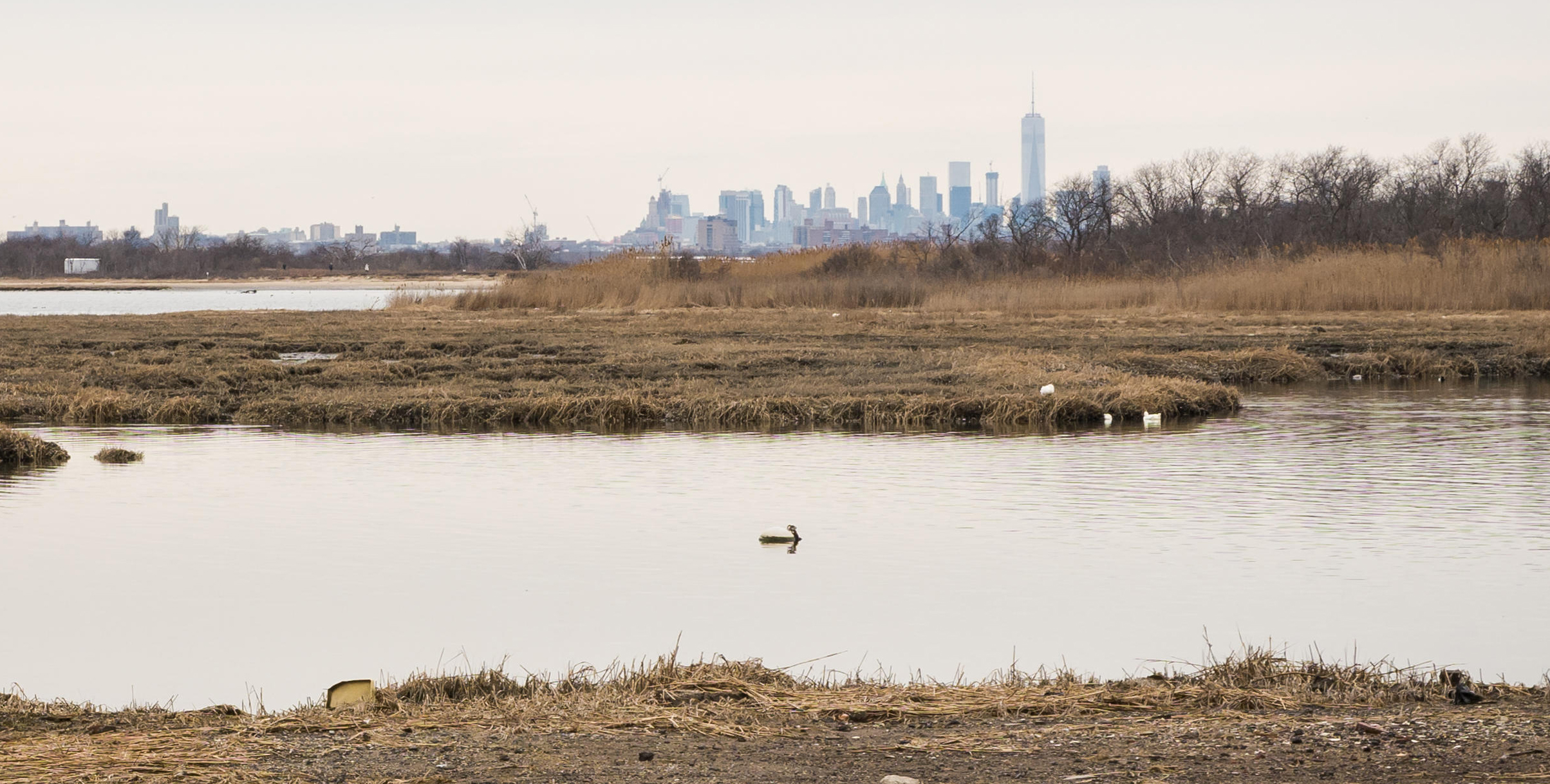During Sandy, Wetlands Averted US $625-Million in Damages
A new analysis confirms the protective role played by wetlands.
Article body copy
In 2012, tropical cyclone Sandy made landfall in the United States’ northeastern coast, killing scores and causing extensive damage. The storm went on to become the second costliest cyclone in US history, after Hurricane Katrina. But as new research shows, it could have been much worse. Confirming their long-argued role as natural defenses, scientists calculated that coastal wetlands prevented as much as US $625-million in property damage during the storm.
Overall, Sandy caused an estimated $50-billion in flood damages. Storm surge causes much of the damage during a tropical cyclone, but wetlands helped absorb some of the wave energy and rising water. To understand the potential storm damage without the cushion of wetlands, researchers turned to computer modeling. Scientists at the University of California, Santa Cruz (UCSC), the Nature Conservancy, the Wildlife Conservation Society, and other institutions used models commonly used by insurance and reinsurance companies.
Risk-modeling companies like Risk Management Solutions—one of the partners on the project—use wetlands data in their models for clients, but hadn’t previously broken the role of wetlands out separately.
The two-year-long project found census tracts with wetlands experienced an average 10 percent reduction in property losses. In Maryland, wetlands reduced property damages by an estimated 30 percent. Delaware saw a 10 percent reduction. New Jersey, among the areas hardest hit by the storm, also saw the highest absolute savings with wetlands preventing $425-million in property damages.
Researchers found that properties upstream from wetlands benefited from reduced flood heights. And just being in proximity of a wetland helped reduce damage.
In Ocean County, New Jersey, a city hit especially hard by Sandy, the researchers took the study one step further, creating a set of 2,000 simulated storms based on historical weather records from 1900 and 2011 to estimate annual savings attributable to wetlands. The models found a 20 percent reduction in average annual coastal property losses.
Wetlands, however, sometimes failed. The researchers found that wetlands may block the flow of water, which increased flood levels and damage to properties. It’s a negative effect also associated with sea walls and other artificial defenses. A wetland fail, however, was typically caused when man-made modifications changed water flow patterns.
Michael Beck, the Nature Conservancy’s lead marine scientist and an adjunct professor at UCSC, says the research offers a way to appraise the value of wetlands.
“By doing this kind of modeling, wetland conservation and restoration could be considered in insurance premiums,” he says.
In addition, communities should rethink their rebuilding efforts, Beck says. He points out that after Sandy, tens of billions of dollars were invested in infrastructure projects like sea walls and levees, while only tens of millions went into strengthening green infrastructure—natural defenses, such as planting dunes and restoring freshwater flow into wetlands.
This shift to green infrastructure has started in some places, however incrementally. In New York City, where wetlands have been shrinking for decades, a small slice of the city’s $20-billion post-Sandy resiliency plan includes funding for restoring 0.28 square kilometers of degraded wetlands on Staten Island and other coastal restoration projects.
“We think a much greater portion of our post-disaster relief should go into natural resilience,” Beck says.

